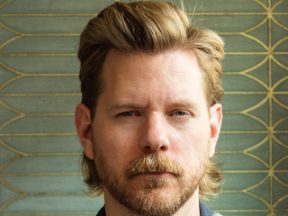Peep Laja is a launcher. Having arrived in Austin, Texas, 14 years ago from Estonia, he launched CXL, a conversion optimization firm that morphed into e-learning. Then he launched Speero, a consultancy, and then Wynter, a SaaS platform for B2B buyer intelligence. All three are thriving.
“I’ve always been entrepreneurial,” he told me. “I like starting things. It’s not like I needed more. It just comes. Plus, my strengths are not spreadsheets and operations.”
He and I recently discussed his journey. Our entire audio conversation is embedded below. The transcript is edited for clarity and length.
Eric Bandholz: You’ve founded three businesses.
Peep Laja: Yes. About 10 years ago, I started CXL as a conversion optimization agency, and five years later I added an e-learning arm. Then we spun off the agency into Speero with CXL focused on training. Two years ago I started Wynter, which provides customer intelligence to B2B companies.
I have no active role in Speero other than being on the board. I’m all in on CXL and Wynter. On Wynter, I’m tactical, hands-on. On CXL I’m more strategic — where are we going?
I’ve always been entrepreneurial. I like starting things. It’s not like I needed more. It just comes. Plus, my strengths are not spreadsheets and operations.
When the business gets to a certain size, other people far better than me can run it.
While I focus on CXL and Wynter, it is hard mentally, the content switch.
Bandholz: I’m trying to start a new brand for grooming and beauty. Moving from a strategic to an execution role is challenging. I’ve seemingly lost my ability to run a calendar, show up on time, and respond to emails.
Laja: Right. Life has seasons. When I started CXL, I stayed up late writing blog posts, hustling, putting in the hours. I now have two kids and a wife. I have less time. I try to work smarter.
I feel frustrated with Wynter. The business is in the early stage. There’s less money and resources. I sometimes roll my eyes with the technical stuff I don’t want to do anymore. I’m tired of writing blog posts.
Bandholz: How do you avoid starting a project that becomes a money suck?
Laja: It’s hard. It’s always a bet, a gamble. It’s easy to get caught into the comparison trap of looking at other startups and how fast they are growing. With Wynter, this is year one for us. We’re going to do $450,000 in revenue in 2021. For a first-year bootstrap, that’s a solid start.
So it’s essential to manage my inner game and not compare to others.
Bandholz: You’re from Estonia.
Laja: Yes. I moved here in 2008. I’m here because I fell in love with a girl from Austin. I was an entrepreneur before that. I was already making money.
I’ve been here now long enough to forget many of the differences between Europe and the United States. Both have a similar Western culture. So it was an easy transition.
The main challenge was language. My previous businesses were not in English. I was big in Estonia. I had built a business in Panama. And when I came to the States and started my Conversion XL blog in English, it felt daunting. But I got over it.
Bandholz: You mentioned delegating operations. How do you know when to do that, and how do you find the right people?
Laja: CXL was initially a consulting company. Then I got tired of consulting. I was looking for a way out.
So I surveyed our email list, asking, “What else could we sell to you?” They said, “Courses and training.” That’s how we started with e-learning. It was a new challenge.
The company had middle management, so to speak. It could survive my departure. My co-founder has different skills from mine. His strength is operations. He was running the ship.
It’s a similar dynamic with Wynter. I have heads of growth, operations, and product — all manage teams.
So the day-to-day execution is run by others. The key steps are having functional heads in place that you trust. I try to nourish and promote from the inside. Somebody who’s showing promise, who’s proactive — those are good signs.
Bandholz: Many entrepreneurs sell the business rather than transition to a strategic role, such as a board member. But you’ve opted to keep Speero.
Laja: It’s a matter of comparing the two options. An agency is not easy to sell. Plus the valuation is typically based on EBITDA — operating profits, essentially. But agencies are not very profitable. A 20% margin is excellent. A really good agency gets 5-times annual EBITDA.
So you crunch the numbers and realize it’s not a lot of money. I’m not opposed to selling, but the business needs to grow to make sense.
Plus it’s a cash cow. I’ve ended up with three businesses from CXL’s profits.
For SaaS businesses, $10 million in annual recurring revenue is where multiples get more generous. A $2 million company can go under tomorrow, but $10 million is more solid.
Bandholz: Let’s talk about optimizing ecommerce conversions. Beardbrand is an upper seven-figure business. Our conversion data is always muddy. How do we know when to trust the data versus making gut-feel decisions?
Laja: It depends on the decision. Changing your positioning and your brand is huge. It’s the future of the company. You need your own data and market signals to decide. Certainly a founder’s intuition is important.
But a micro issue, such as optimizing a product page layout, is purely data-driven because you can measure every click, every scroll.
I like what Jeff Bezos at Amazon has popularized regarding how fast to make decisions. It’s a two-by-two matrix. One axis is how reversible the decision is. The other is the impact. A decision that’s irreversible and high impact takes slow deliberation. But a reversible, low-impact issue can be decided quickly.
Bandholz: What are your sources of inspiration and learning, beyond Bezos?
Laja: Earlier in my career, I read ferociously. I’m now much more careful where I get my information based on what’s important to me.
For the last year, I’ve been nerding out on strategy topics. I’m focused on studying network effects because Wynter is essentially a two-sided marketplace. I’m reading Andrew Chen’s book, “The Cold Start Problem.” It’s very relevant to the challenge at hand.
I’m also consuming more micro-content — Twitter and LinkedIn — for SaaS stuff. I follow Jason Lemkin, the SaaS community founder and venture capitalist. He’s everybody’s favorite; the guy is brilliant.
Bandholz: Before this interview, you mentioned that LinkedIn was driving significant volume.
Laja: Right. My LinkedIn content drives 90% of the demo pipeline for Wynter. It’s all organic. Every day I post on Twitter and LinkedIn. It’s mostly the same content. On Twitter, it’s more casual, and I post there more often.
On LinkedIn, it’s once a day. My strategy is to drive a narrative, a point of view, and express what I believe deliberately and carefully. It’s very effective. It’s written content. That’s what LinkedIn users prefer versus video. I talk about positioning, messaging, differentiation, go-to-market strategy.
Wynter is a B2B buyer intelligence tool. I’m opening people’s eyes to look at problems through a new lens.
Bandholz: Where can people learn more about you, follow you?
Laja: Twitter and LinkedIn are best. Or visit CXL, Speero, or Wynter.




